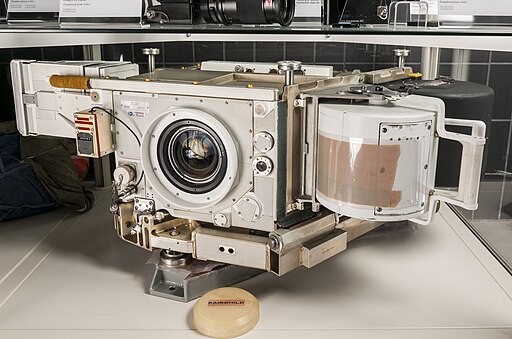Fifty years after the first lunar landing, NASA plans to send humans to the Moon again and establish a sustainable presence there. As astronauts return to the Moon through the Artemis missions, part of their job is to take more pictures of the lunar surface than any humans before. This requires a state-of-the-art camera which will revolutionize lunar photography.

Leap in Camera Technology
Since the Apollo Moon landing missions, capturing high-quality pictures has been an important part of lunar exploration. To meet the growing demand for high-quality images and videos, NASA and ESA collaborated to develop the new Handheld Universal Lunar Camera (HULC).
HULC was created by incorporating professional off-the-shelf cameras with a few modifications. Although ESA has not disclosed the specific technology used, experts suspect it to be the Nikon Z9. As a compact and lightweight tool, this handheld camera is specially designed to function flawlessly in a challenging lunar environment.
One of the exceptional features of the HULC is its ability to capture crystal-clear images in low-light environments. Using state-of-the-art lenses and mirrorless systems, it ensures the highest quality visuals on the lunar surface.
The camera also has a new set of ergonomic buttons to make it easier for astronauts to use the device even while wearing gloves in bulky spacesuits. To prepare it for the lunar environment, the engineers included a blanket for dust and thermal protection since the temperature on the Moon ranges from -200 to 120 degrees Celsius.
READ ALSO: Artemis III Mission To Be First To Target Moon's South Pole
Testing the Features of HULC
To prepare HULC for its use on future lunar missions, it was integrated into ESA's PANGAEA training program. This course is designed to provide astronauts with the basic knowledge and practical skills during future planetary exploration missions to the Moon and Mars.
Engineers behind this next-generation device tested HULC in the Moon-like landscapes of Lanzarote, Spain. It aims to put the new camera through its paces during the PANGAEA training program.
The PANGAEA course aims to teach astronauts the basic knowledge of geology and astrobiology by providing geological analog environments. It focuses on the development of skills to identify and document scientifically relevant samples in the field and communicate to ground control with the use of efficient and geologically correct language. This teaches the trainees to be autonomous field scientists and effective counterparts to the ground science teams.
During their geological explorations, astronauts document their work using the ESA Electronic Field Book, which enables geology instructors to monitor and support the crew from the science room. This year, the team received live audio and video in real-time. According to PANGAEA's Project Lead, Loredana Bessone, adding the Moon camera enabled the crew to have a realistic taste of lunar surface exploration.
The core of HULC remains the same, but the interface and housing keep evolving. One version will fly to the International Space Station for additional testing shortly. Experts from NASA have done testing for the three major challenges of space: thermal, vacuum, and radiation effects. On the Moon, the abrasive nature of lunar dust will pose an additional challenge.
RELATED ARTICLE: NASA's Orion Optical Navigation Camera Seized New Moon Images Showing Off Edge of Lunar Disk [Look]
Check out more news and information on Artemis in Science Times.














